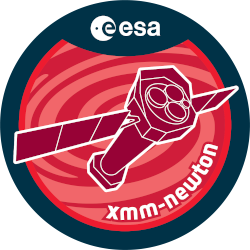

| Proposal ID | 015123 |
| Title | X-rays from Broad Absorption Line Quasars with Extreme Properties |
| Download Data Associated to the proposal | https://nxsa.esac.esa.int/nxsa-sl/servlet/data-action-aio?obsno=0151230101 |
| DOI | https://doi.org/10.5270/esa-sy05jte |
| Principal Investigator, PI | Dr Patrick Hall |
| Abstract | We propose observations of three Low-Ionization Broad Absorption Line (LoBAL)Quasars with unusual properties. UN J1141-0143 is the most radio-loud LoBALquasar known, and only the second classical radio double BAL quasar known.SDSS 0300+0048 has LoBAL troughs spanning at least 13000 km/s with localcovering factor 50-100%, so that 90% of the rest-frame UV flux blueward of Mg IIis absorbed. Nonetheless, its BAL gas column density may be the same as in lessextreme LoBAL quasars; X-ray observations are needed to test this possibility.SDSS 2215-0045 is a unique bright LoBAL quasar with stronger absorption fromFe III than from Fe II. The reasons for its unique UV spectrum are unknown;X-ray observations will narrow the list of possibilities. |
| Publications |
|
| Instrument | EMOS1, EMOS2, EPN, OM, RGS1, RGS2 |
| Temporal Coverage | 2003-07-05T23:48:26Z/2003-07-06T02:50:25Z |
| Version | 17.56_20190403_1200 |
| Mission Description | The European Space Agencys (ESA) X-ray Multi-Mirror Mission (XMM-Newton) was launched by an Ariane 504 on December 10th 1999. XMM-Newton is ESAs second cornerstone of the Horizon 2000 Science Programme. It carries 3 high throughput X-ray telescopes with an unprecedented effective area, and an optical monitor, the first flown on a X-ray observatory. The large collecting area and ability to make long uninterrupted exposures provide highly sensitive observations. Since Earths atmosphere blocks out all X-rays, only a telescope in space can detect and study celestial X-ray sources. The XMM-Newton mission is helping scientists to solve a number of cosmic mysteries, ranging from the enigmatic black holes to the origins of the Universe itself. Observing time on XMM-Newton is being made available to the scientific community, applying for observational periods on a competitive basis. |
| Creator Contact | https://www.cosmos.esa.int/web/xmm-newton/xmm-newton-helpdesk |
| Date Published | 2004-09-07T00:00:00Z |
| Last Update | 2025-08-04 |
| Keywords | "x rays", "lobal quasars", "lobal troughs spanning", "sdss 0300", "fe ii", "stronger absorption", "uv spectrum", "sdss 2215 0045", "fe iii", "13000 km", "SDSS", "bright lobal quasar", "mg ii", "un j1141 0143" |
| Publisher And Registrant | European Space Agency |
| Credit Guidelines | European Space Agency, Dr Patrick Hall, 2004, 'X-rays from Broad Absorption Line Quasars with Extreme Properties', 17.56_20190403_1200, European Space Agency, https://doi.org/10.5270/esa-sy05jte |